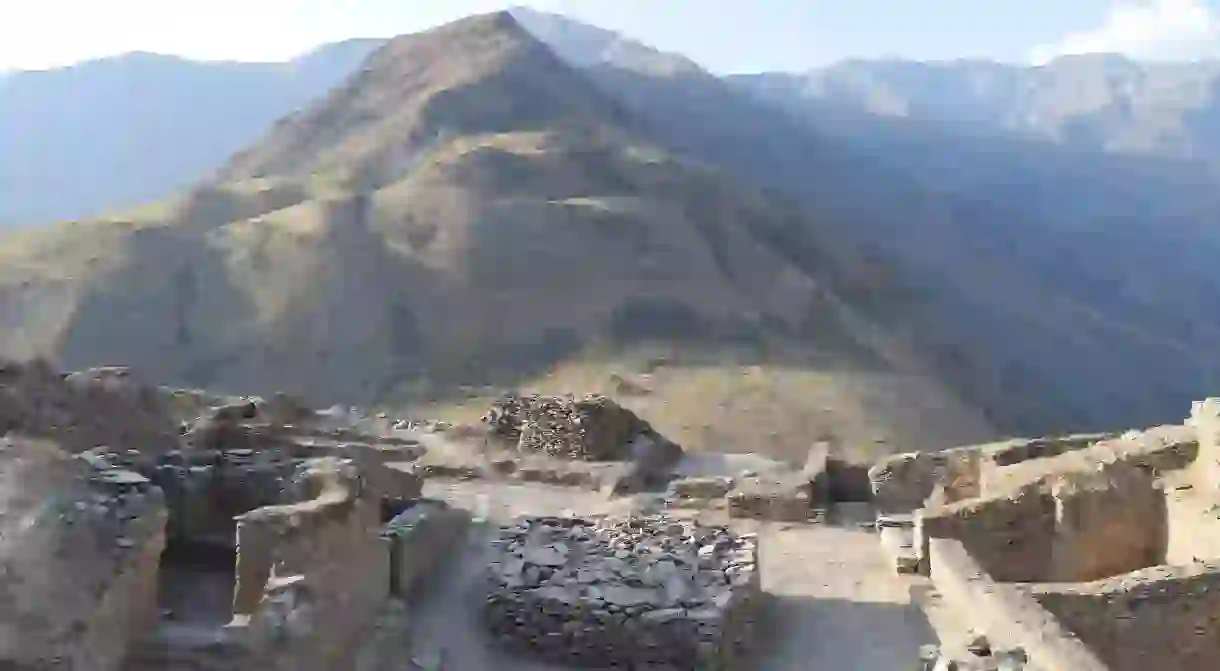Exploring the Lost City of Karon: What the Machu Picchu of Tajikistan Means for Tourism

Once the purview of travellers seeking adventure, Tajikistan is now drawing visitors for its historical and cultural heritage. The discovery of the ‘lost’ ancient city of Karon is emblematic of this new era for tourism in Tajikistan.
Lost cities that are discovered may not actually be lost. The existence of Machu Picchu – famed as the “Lost City of the Incas” – was known to the local community all along; its moniker was little more than an archaeologist’s marketing ploy.

But in Tajikistan’s Gorno-Badakhshan Autonomous Oblast (GBAO), a vast and remote region dominated by the soaring Pamir Mountains, the population density is just one person per 2.5sq km (1sq mile). GBAO is, it turns out, big enough and wild enough for the few local residents to completely overlook a 100+ hectare (247+ acre) archaeological site.

Discovering Karon
When archaeologist Yusufsho Yukubov was summoned to the town of Kalai Kumb in 2012 to examine a strange mud brick structure, that might have been the end of the story. The Pamir are dotted with medieval shrines of little historical interest in the grand scheme of things. But the domed building he saw, even in its ruinous state, didn’t fit with the usual architectural conventions. To the veteran archaeologist, it was instantly obvious that this was something older, and far more interesting.
The building that Yukubov inspected is now thought to be the only surviving Zoroastrian water temple in Central Asia, dating from the 2nd millennium BC. His team of Tajik archeologists have been increasing the scope of their excavations year on year, digging every summer season while the weather is amenable. The site they’ve found near Kalai Kumb is called Castle Karon.

Karon is atop a steep cliff above the Pamir Highway, which hugs the border between Tajikistan and Afghanistan. The climb to reach the site is the first challenge. A rough track has been cut into the mountainside, but the bends are so tight that even a 4×4 has to do a three-point turn to get up.
At the top, the site flattens out into a plateau. Yukubov has established that the flat area was used as a polo field. “The polo field would have been 30m (98ft) wide and 50m (164ft) long,” he described. “The ruler watched from a raised platform, and around him there was capacity for 10,000 spectators, both men and women, in the stands.” Today, you’d have to invite everyone within a 100km (62mi) radius of Karon to fill those stands. In order to justify a hippodrome of such size, ancient Karon must have been a very substantial city indeed.
Karon’s citadel looked down on the polo field. Yukubov is peeling back the earth layer by layer, revealing streets and walls and rooms. The find, which elicits the most joy on his face, is a fully formed stoneware pot, and close by it, a blackened niche. The sooty marks suggest it would have been an altar of some kind, probably surrounding an open flame symbolising the Zoroastrian god. The people who lived here made their money from overland trade, and also from mining and processing gold.

Looking forward – building on ancient history
Until now, Tajikistan has been seen as a hardcore adventure destination. The Pamir Highway is recognised as one of the world’s great road trips, and determined cyclists pit their stamina against its fearsome mountain route. There are unclimbed peaks and glacier treks in the Tajik National Park (a UNESCO World Heritage Site), opportunities for yurt stays with Kyrgyz nomads in the Pshart Valley, and some of the best hiking and mountain biking trails in Central Asia in the Fann and Zeravshan Ranges. But even seasoned travellers often struggle to identify the country on the map.

Tajikistan’s tourism potential is undoubtedly underexploited, but there are positive signs that this is going to change. The Tajik government declared 2018 the Year of Tourism, and has introduced an efficient e-visa system. According to official statistics, foreign visitor numbers topped 1 million for the first time in 2018 (though admittedly this includes all foreign arrivals in the country, not just tourists). The World Bank has committed to spending $30 million on rural economic development in the next five years, the majority of which is earmarked for tourism infrastructure and capacity building in the Khatlon Region and GBAO.
“Investment in infrastructure is very important in making sure that the sites are tourism friendly,” explains the World Bank’s Raha Shahidsaless. “Basic infrastructure… provides more opportunities for people to spend money, commercialising the sites whilst ensuring their sustainability.” Key sites identified for development include the dramatically situated Yamchun Fortress in GBAO’s Wakhan Corridor, and Hulbuk Fortress, Khoja Mashad madrassa, and the Chiluchorchashma spring in Khatlon.

The combination of developing cultural sites, and expanding and upgrading Tajikistan’s network of homestays and guesthouses is widening the appeal of Tajikistan. One of the main challenges, according to David McGuinness of tour operator Travel Unknown, is providing better accommodation, which, he believes, will attract more tourists to Tajikistan and more clients to his tours. Extreme adventures are still on the agenda, but tourists who prefer a mixture of history, culture, and active tours, plus a comfortable place to stay at night, are starting to be better catered for.
For Yakubov, Karon has become something of an obsession: he expects its discovery to be the pinnacle of his six-decade-long archaeology career. There is much work to do to develop the site and help it gain it the international recognition it deserves. But already, visiting the site nicknamed “The Machu Picchu of Tajikistan” is among the highlights of a trip to this Central Asian nation – and a harbinger of its widening appeal.













